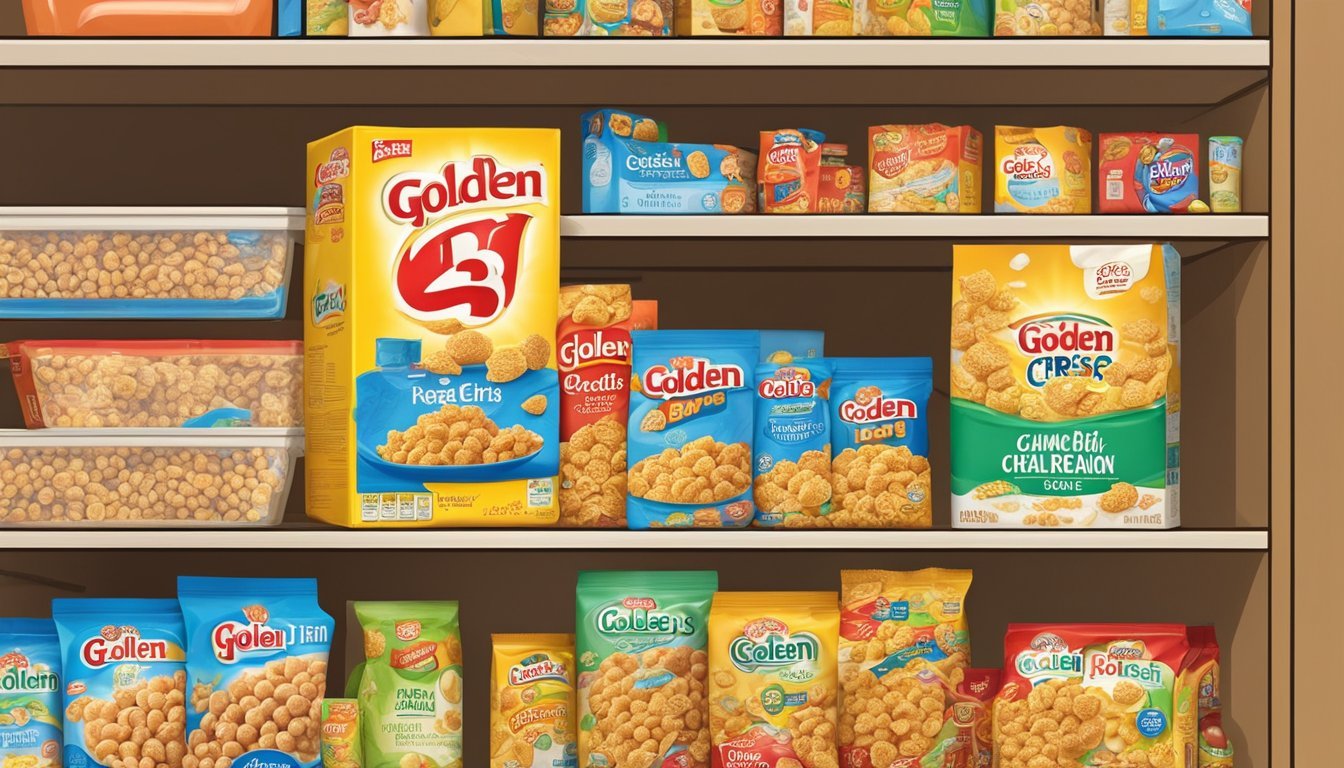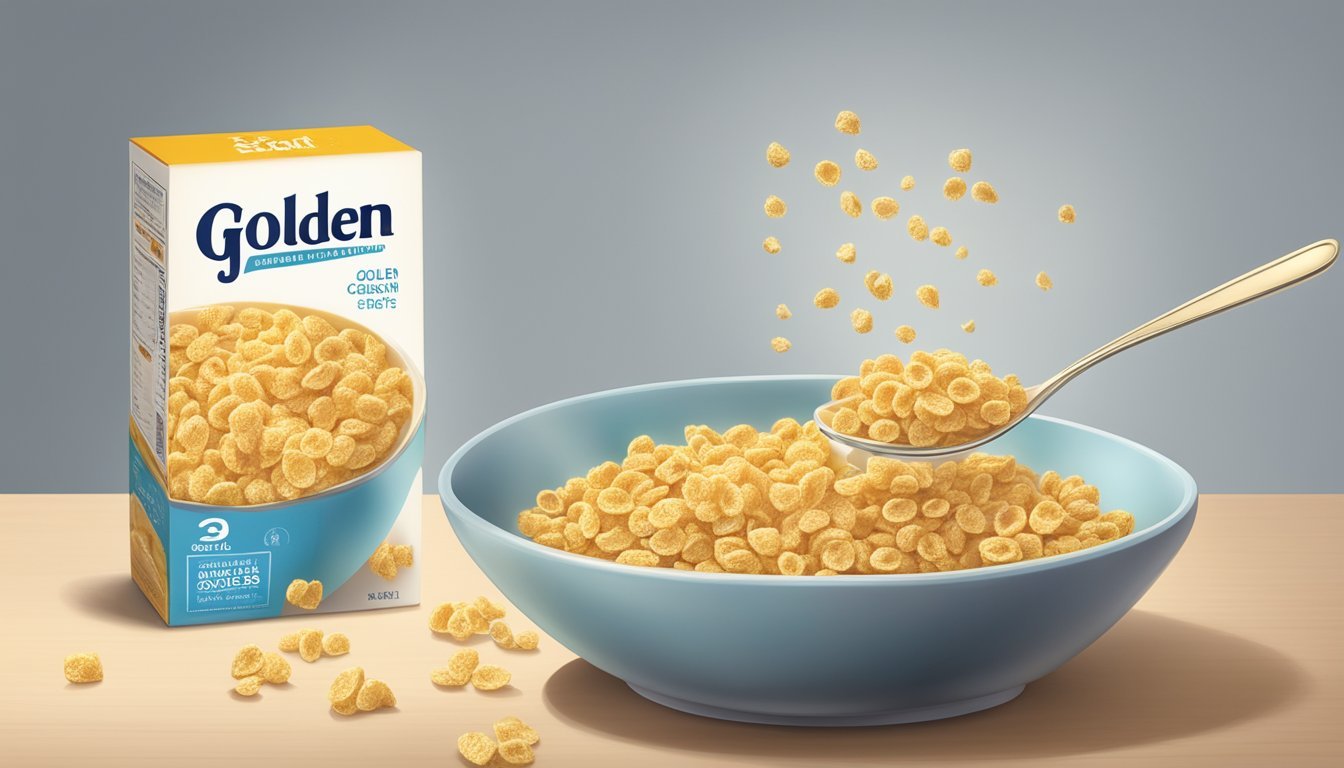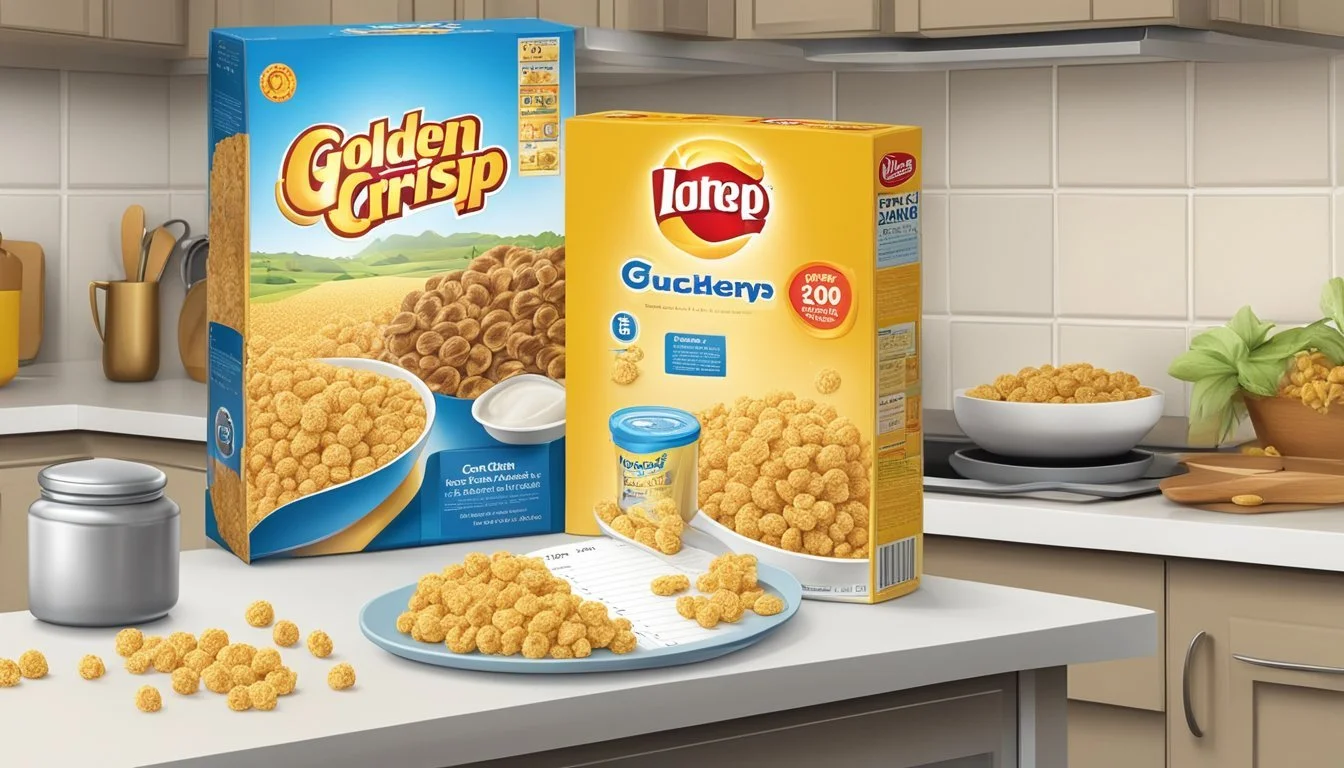How Long Does Golden Crisp Last?
Shelf Life and Preservation Tips
Golden Crisp is a sweetened, puffed wheat breakfast cereal recognized for its high sugar content, introduced to the United States market in 1948. As a non-perishable food, its shelf life typically aligns with industry standards for dry cereals, making it a convenient option for those seeking a quick and easy breakfast or snack. Proper storage is key to maintaining the cereal's crispness and flavor, involving keeping it in a cool, dry place away from moisture and heat.
When unopened, a box of Golden Crisp can last well beyond the printed “best by” date, often remaining suitable for consumption for several months, as long as the packaging remains intact and undamaged. Once opened, the cereal's longevity may decrease, largely due to exposure to air and humidity. To maximize freshness after opening, it is advisable to seal the inner bag tightly or transfer the contents to an airtight container.
Understanding the Basics of Golden Crisp
Golden Crisp is a sweetened, puffed wheat breakfast cereal known for its distinctive sugary taste. It originated in the United States in 1948. This cereal is recognized by its honey flavor and the shiny, candy-like coating on the wheat puffs that give it its name.
Ingredients and Nutrition:
Main components: Puffed wheat, sugar, and honey.
Sweetness: High sugar content is a characteristic of Golden Crisp.
Calories: Generally high due to the sugar and honey content.
Appearance: Golden Crisp has a light brown color and a glossy appearance, with individual puffs being airy and crisp to the bite.
Shelf Life: The cereal's shelf life is influenced by factors such as the packaging, storage conditions, and the best by date printed on the box. Properly stored in a cool, dry place, Golden Crisp can maintain its freshness until the best by date.
Serving Suggestions:
Straight from the box: Consumed as a dry snack.
With milk: Served traditionally with dairy or plant-based milk.
In recipes: Used as an ingredient in various sweet treats and desserts (What wine goes well with desserts?).
Consumer Information: People with dietary restrictions related to sugar intake should consume Golden Crisp in moderation due to its high sugar content. The cereal is advertised as a convenient breakfast option, often aimed at children and those seeking a sweet start to their day.
Optimal Storage Methods
When storing Golden Crisp or similar products, it's essential to consider factors such as temperature, container type, and location that suit the item's preservation needs.
Room Temperature Storage
For short-term storage, Golden Crisp should be kept in a dry, cool place such as a pantry or kitchen counter, away from direct sunlight. They can be stored at room temperature, ideally between 60°F and 70°F (15°C to 21°C), in an airtight container to maintain their crispness and prevent moisture from causing sogginess.
Refrigerator Storage
Golden Crisp benefits from refrigeration for extended freshness. They should be placed in the refrigerator within an airtight container to prevent the absorption of other food odors. The recommended storage temperature in a fridge is between 32°F and 40°F (0°C to 4°C). Wrapping them in plastic wrap can also help retain freshness but ensure it's not too tight to allow for slight air circulation.
Freezer Storage
For long-term preservation, Golden Crisp can be stored in the freezer. The items should be sealed in an airtight container or a freezer-safe plastic wrap to protect against freezer burn and odor transfer. Freezing Golden Crisp at 0°F (-18°C) can significantly extend its shelf life while maintaining quality.
Shelf Life and Preservation
When considering the shelf life and preservation of Golden Syrup (how long does golden syrup last?), factors like storage temperature, sugar content, and moisture play pivotal roles. The preservation techniques can extend the product's usability well beyond its best before date, while recognizing spoilage signs is crucial to ensure safety and quality.
Shelf Life Factors
Golden Syrup boasts a high sugar concentration which naturally inhibits bacterial growth and mold formation, contributing to its long shelf life. Properly sealed and stored Golden Syrup can last for years, with some bakers maintaining that unopened Golden Syrup never truly expires. However, once opened, the syrup is best used within two years for optimal flavor and freshness.
Temperature: A cool, dry place is ideal for storage to maintain the syrup’s texture and prevent fermentation.
Moisture: Keeping moisture out is crucial, as it can lead to spoilage.
Extension Techniques
To maximize the longevity of Golden Syrup, one should apply the following techniques:
After use, ensure the lid is tightly sealed to keep out air and contaminants.
Store the syrup in a cool and dark environment to reduce the risk of degradation.
Signs of Spoilage
While Golden Syrup is less prone to spoilage, certain indicators should not be ignored:
Texture: A hardening of the syrup may occur over time, though this does not necessarily indicate spoilage.
Flavor: Any noticeable off-flavors suggest the syrup should not be used.
Mold Growth: If visible, the product should be discarded immediately.
By adhering to proper storage methods and being vigilant for signs of spoilage, Golden Syrup can remain a safe and delightful addition to various baking endeavors for an extended period.
Impact of Ingredients on Longevity
The longevity of Golden Crisp cereal or homemade apple crisp is largely influenced by the ingredients used, especially the levels of fruit and sugar content, as well as the type of fats and flours incorporated into the recipe.
Fruit and Sugar Content
Fresh fruit like apples and berries in apple crisp are natural sources of sugar, and they contribute to the overall shelf life of the dish. The moisture in the fruit can affect the duration the crisp remains fresh. When sugar is added, it acts as a preservative by reducing moisture content, which can help to extend the crisp's longevity. For instance:
Apples: A high concentration of natural sugars and pectin in apples leads to a longer-lasting product.
Berries: Berries, while juicy, may add extra moisture that could shorten the crisp's life unless balanced with sugar.
Citrus: Using citrus like lemon juice can help prevent oxidation of the fruit, thus preserving the color and potentially extending the freshness.
Using sugar in moderation is key as it can not only enhance flavor but also help preserve the crisp by drawing out moisture which can deter microbial growth.
Flour and Fat Considerations
The choice of flour and fat greatly determines the texture and shelf life of the dessert. For example, a crisp topping made with:
All-purpose flour tends to hold up well and retain its texture, contributing to the overall longevity when compared to whole wheat or alternative flours.
Butter provides rich flavor but can lead to a shorter shelf life due to the potential for rancidity.
Shortening may extend longevity as it is less likely to go rancid as quickly as butter.
Furthermore, oats are commonly added to the topping for their pleasant texture and ability to absorb excess moisture without becoming soggy, which can add to the crisp's shelf life. Properly stored, a crisp may maintain optimal flavor for approximately 3-5 days.
Reheating and Consuming Leftovers
When it comes to enjoying leftover golden crisp, the methods of reheating play a crucial role in preserving its texture and flavor. A key focus is on maintaining the quality of this dessert to ensure consumers can still relish its intended taste and aroma.
Best Practices for Reheating
For reheating golden crisp, the oven is generally preferred over the microwave. This method helps in retaining the dessert's texture, preventing it from becoming too soggy or drying out.
Oven Reheating
Preheat oven to 350°F (175°C).
Place leftover golden crisp in an oven-safe dish.
Heat for about 10-15 minutes or until thoroughly warmed.
By using the oven, individuals can achieve an even reheat that closely resembles the dessert’s original quality.
Microwave Reheating
Although not ideal, it can be quick for smaller portions.
Reheat in short intervals of 20-30 seconds to avoid overheating, which can alter texture significantly.
Golden crisp should be monitored closely to prevent a decrease in flavor quality, especially when using a microwave.
Assessing Leftover Quality
Before deciding to reheat golden crisp leftovers, consumers should assess the quality.
Texture: It should still have a crisp topping and tender fruit base.
Flavor: It's essential that the leftovers haven't dulled in taste or taken on flavors from the refrigerator.
Smell: The golden crisp should have its characteristic sweet-spiced aroma without any off-odors.
The leftovers should generally be consumed within 3-4 days when stored properly in the refrigerator.
Freezing and Thawing Techniques
Proper freezing and thawing techniques ensure that Golden Crisp retains its quality. The process involves cooling the cereal treat adequately before freezing and applying gentle reheating methods for consumption.
How to Freeze Golden Crisp
Golden Crisp can be frozen to extend its shelf life. The treat should be cooled to room temperature to prevent condensation inside the packaging. For optimal results:
Cool the Golden Crisp thoroughly on a wire rack.
Wrap the treat tightly in plastic wrap, followed by aluminum foil to prevent freezer burn.
Store in the freezer by placing the wrapped treat in an airtight container or a resealable freezer bag.
Label the package with the date to keep track of freshness.
Thawing and Serving Recommendations
When one is ready to serve frozen Golden Crisp, gradual thawing in the refrigerator is recommended to maintain texture:
Transfer the frozen treat to the refrigerator and allow it to thaw overnight.
Reheat gently in the oven at a low temperature (around 300 degrees F) to recrisp the texture.
Serve after making sure it has reached the desired temperature and crispness without overheating, as this may dry it out excessively.
Health and Safety Considerations
When it comes to cereal like Golden Crisp, maintaining proper handling and storage is essential to prevent spoilage and potential foodborne illnesses. Since cereal is dry, it's less prone to bacteria and mold growth than perishable items, but proper practices are still crucial to ensure safety.
Crisp Handling and Hygiene
Upon purchasing Golden Crisp, one should ensure that the cereal's packaging is intact and not damaged. Compromised packaging can lead to exposure to microorganisms and potential contamination. After opening, it's important to seal the cereal tightly to protect it from moisture and pests. Always use clean, dry utensils when serving cereal to prevent the introduction of moisture, which can lead to mold growth.
Food Safety and Spoilage Prevention
Golden Crisp cereal doesn't require refrigeration due to its low moisture content, which inhibits the growth of bacteria and mold. However, storage in a cool, dry place is recommended. Signs of spoilage to watch out for include an off odor, visible mold, or a damp texture. If any signs of spoilage are present, the cereal should be discarded.
Ethylene-producing foods: While ethylene is mostly a concern for harvested produce with skin, such as fruits, it's not relevant to Golden Crisp cereal storage.
Temperature: Keep the cereal at room temperature away from direct sunlight and heat sources to maintain its quality.
Shelf-life: As a guideline, consume an opened box of Golden Crisp within 2 to 3 months for optimal taste and freshness. Unopened, it can last much longer, but always adhere to the "best by" date for quality assurance.
Frequently Asked Questions
In this section, readers will find concise and reliable answers addressing the shelf life and safe consumption of Golden Crisp cereal. The information provided aims to guide consumers in maintaining freshness and identifying when a product might be past its prime.
Common Queries Regarding Durability
Shelf Life: Golden Crisp cereal typically lasts between 6 to 8 months when unopened and stored in a cool, dry place. After opening, consumers are advised to consume it within a period of a month for optimal taste and freshness.
Indicators of Spoilage: Consumers can identify a spoiled product by a change in smell or appearance. If the cereal emits an off odor or has visible mold, it should be discarded.
Safe Consumption and Allergen Information
Expiration Date: It is pivotal for safety to heed the expiration date on packaging. Consuming the product beyond this date might not be safe, as the nutritional quality can deteriorate, potentially leading to foodborne illness.
Allergen Information: Manufacturers provide allergen information on packaging. Consumers with allergies should always check this information to prevent adverse reactions.
Culinary Tips and Tricks
Creating golden crisp textures and enhanced flavors in food requires attention to technique and ingredient quality. Here, the focus is on practical advice aimed at achieving the perfect crispy result and inventive approaches to serving such dishes.
Improving Crisp Texture and Flavor
Properly crisp textures often rely on the meticulous execution of baking or frying processes. When aiming for crispy outcomes, especially in baked goods or leftover rejuvenation, consider the following:
Choice of Fats: The type of fat used can influence crispiness. Butters or oils with a higher smoking point tend to produce better crispness without burning.
Oven Temperature: Preheating the oven to the accurate temperature is crucial. A general guideline for crispy baked desserts or savory items is setting the oven at 350°F to 375°F.
Baking Powder: A small addition of baking powder can aid in achieving a crispier texture, particularly in batters.
Dry Ingredients: Ingredients like brown sugar or ginger can add nuanced flavors but may also affect moisture content. Balance these with dry ingredients to maintain crispiness.
For maximum flavor and crispiness, baking should be monitored carefully to prevent over or under-cooking. Crispy results also depend on avoiding excess moisture, so ingredients such as eggs should be used judiciously to prevent sogginess.
Creative Serving Ideas
Presentation and innovation in serving can enhance the eating experience of crispy foods. Here are a few suggestions:
Dessert Toppings: Break leftover crispy dessert items into small pieces to use as toppings on ice cream or yogurt for added texture and flavor.
Crispy Add-Ons: Enhance savory dishes with a crispy element. For instance, one might top a creamy soup with crispy baked croutons or vegetables for a textural contrast.
Flavorful Bases: Use a crispy cooked item as a base and build upon it with complementary items, like serving a spiced ginger-flavored crispy base with a dollop of lemon curd or ginger-infused cream.
By considering these approaches, one can ensure that their crispy dishes are not only technically successful but also creatively presented.
Beyond the Basics
In exploring the longevity and versatility of Golden Crisp, one can appreciate the innovations in cereal varieties and how they're adapted across different cuisines.
Crisp Variations and Innovations
Golden Crisp has evolved from its simple beginnings to accommodate a wide array of taste preferences and dietary needs. Manufacturers have created variations that incorporate different flavors, such as apple pie or berries, to appeal to a broader audience. In addition, the texture of the cereal has been fine-tuned; today's Golden Crisp offers a satisfying crunch that maintains its integrity better in milk compared to its predecessors. This is particularly important when considering Golden Crisp as an ingredient in baked goods, where it can provide a contrasting texture to the softness of a fresh, ripe Granny Smith apple in apple pie.
Golden Crisp in Different Cuisines
When Golden Crisp is mentioned in the context of global cuisines, it's important to note its adaptability. While traditionally not associated with savory dishes, chefs have incorporated this sweetened puffed wheat cereal into recipes to add a unique sugary crunch. For instance, innovative recipes might include a topping of Golden Crisp for a baked berry crumble, providing both flavor and a contrasting texture. Chefs also use the cereal as a crunchy element in fusion dishes, combining it with staples from various cuisines. The robust flavor of Golden Crisp holds up even when paired with stronger tastes, making it a versatile ingredient.











